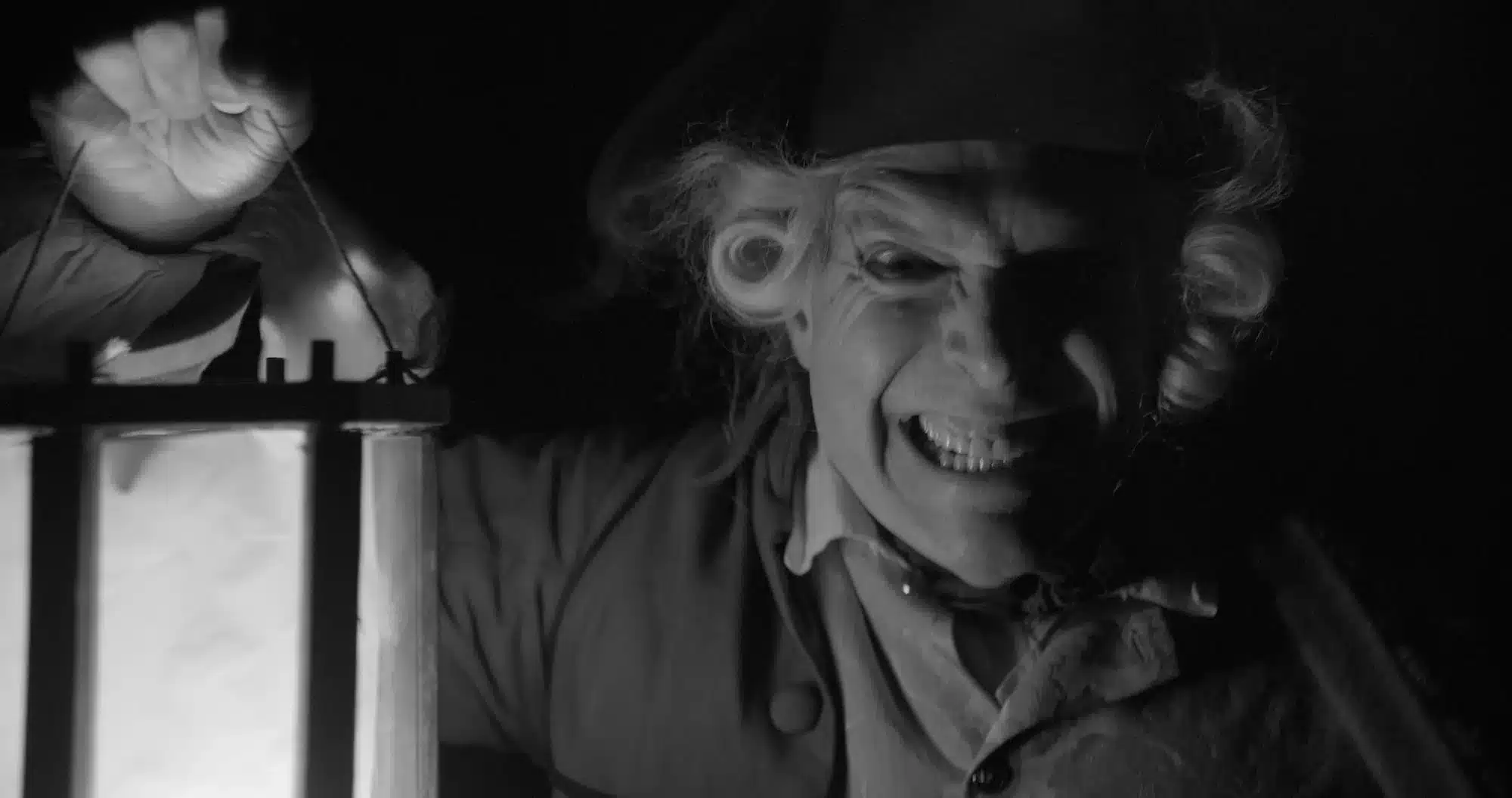
There has, in recent years, been a modest resurgence in interest in the genre of folk horror, with directors such as Ari Aster and Robert Eggers putting their own spin on recognisable folk horror features such as closed communities, local belief systems and irrational devotion to the edicts of these systems. As such, the likes of Midsommar and The Witch have a direct line of descent from the likes of The Wicker Man and The Blood on Satan’s Claw. But there’s more to the genre, and if we look beyond cinema to the long traditions of oral storytelling, early print, music, drama and television, then we broaden the scope significantly. Sean Hogan’s economical short-ish film To Fire You Come At Last is firmly rooted in the kinds of supernatural tale-telling which once furnished ballads, local folklore, and then the likes of the penny dreadfuls and stage plays. It’s a simply, subtle story which, in this case, belongs to a specific time, place and cast of characters, but in its revelations and reckonings could be anyone, anywhere. It’s this balance which Hogan gets very right, using its supernatural elements elegantly and ambiguously.
At the film’s start, a wealthy local Squire (Mark Carlisle) has been bereaved of his only son: he wants his boy to receive a decent burial, which means transporting him to the nearest churchyard; for those villages which didn’t have a church, this could mean carrying the coffin manually to its final resting place, if a horse and cart couldn’t do the job (see for example some of the ‘corpse roads’ in England). Alongside his son’s best friend Holt (Harry Roebuck), manservant Pike (Richard Rowden) and an obsequious drunk named Ransley (James Swanton), paid to help, Squire Marlow is keen to get going – despite the fact that he’d hoped not to have to act as one of the bearers, but they’re a man short else. Holt, well-versed in the monstrous folklore of the Lych Way they’ll be taking, is afraid of the moor’s lonely darkness: stories of its spectres and strange circumstances have rattled him. Still, they must begin, and as night falls, the men talk.
All of these men are, to a greater or lesser extent, known to one another. They all live in the same village; they all knew the deceased, Aldis, and all have their tales to tell. What ensues is an unfolding of their quietly kept, sinister, interlocking histories; as they progress along the path, unreason rises higher and higher, forcing relationships to falter, revelations to come out. All of this is precipitated, at first, by the scraping, but conniving Ransley, who takes on a dangerous, trickster persona, prying and searching for weaknesses in his social betters, in the ways that old folklore often has Old Scratch manipulating and misleading people to their damnation. Whilst Hogan doesn’t take things quite that far, Ransley is certainly a catalyst in the film and he’s well played by Swanton; all of the actors in this small cast enact their roles very well, and it’s no disservice at all to then to say this feels like a stage play, or indeed series like Play for Today at their darkest.
Speaking of which, this black and white, beautifully lit and enhanced array of night-time scenes works brilliantly. Despite making it clear, through an opening run of well framed shots of the landscape and broader vistas, this feels like a very claustrophobic experience in the way that darkness does feel. You lose all sense of distance in the pitch dark; these men, with only candle lanterns to light their way, are at the mercy of their imaginations as they glimpse what they think they glimpse, barely there before them.
It must be incredibly hard to shoot a period feature and not fall foul of some little detail which breaks the spell; famously, one of the Big Three folk horrors, Witchfinder General, slips up by including a shot of a modern house in one of its scenes, as well as a few TV aerials here and there. To Fire You Come At Last is suggested as taking place in the 1600s, which perhaps isn’t right in a few respects (phrases like ‘she threw him over’ are awry) but overall the spell here works – the language is simplified and accessible, but it’s generally thoughtful, plausible and effective, building character and tension well. The costumes do enough to signify that there are divisions of class, wealth and power here, and best of all the film balances historical distance with familiarity: it addresses beliefs which we still practice but may have lost the basis for, such as why we carry a coffin ‘feet first’ (superstition has it that this is so the corpse can’t look back or come back). Does this explain some of the fascination with folk horror? Does it tantalise some lost language, known to our ancestors but unintelligible to us? In folk horror, it’s often the case that outsiders suffer, because they don’t know the rules of a certain place; here, it’s us. It’s so often us. Severin Films, the production company behind this film, have discussed at length our complicated relationship with folk horror. I think this film captures its feelings of distance yet closeness. But beyond all that, it’s simply an eerie, well-paced, quietly horrific tale, and a welcome addition to the modern genre which effectively bridges the gap between old and new.
To Fire You Come At Last (2023) screened at FrightFest 2023.
